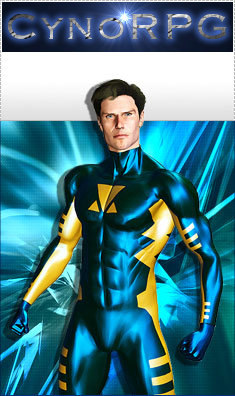Board-Gaming Rules
Have you ever participated in a spectacular combat in your role-playing campaign? Have you ever wished that you could perform that combat with table-top miniature figures and see how the combat really occurred? Now you can. One of the most exciting thing about Cyno's Role-Play is that you can turn your role-playing game into a board game, and vise-versa. In fact, you can mix the two. You can run a campaign in story-telling way, then switch to table-top gaming in combat. Or you can play the entire campaign as a board game. It's your choice. This section explains the board-gaming rules for table-top combat.
In table-top combat, each turn is a combat turn. And each turn is 10 seconds long. The order of gaming is the same as defined in the Rules section. There are only two additional rules for your table-top battle: 1) Physical Motion; and 2) Line-of-Sight.
Physical Motion
The character's speed attribute is the number of feet a character can run every second. So the speed attribute times 10 is how many feet your character can run in a 10-second combat turn. The number of turns a character could continuously run is determined by the character's endurance attribute.

But that is for running. Your character can't run the entire time. It's too tiring. So your character is walking most of the time. Walking speed is half of running speed. So a character that can move 120 feet running (speed attribute of 12), can only move 60 feet walking in a 10-second combat turn.
In table-top combat, every inch on the table is about 5 feet in real life. This is to match the standard miniature size. This means that the speed attribute is the number of inches (on the table) your character can walk in a 10-second combat turn. You'll want to have a ruler handy for table-top combat.
Turning
Every time the character changes direction, 90 degrees, it must spend 1-inch of its movement range on turning. It's like turning on a dime. This time accounts for slowing down the forward momentum, slow down, turn, and speeding up the forward momentum again.
To make more realistic, gradual turns, cut a piece of string to length. Lay the string on the path for your character. That's is the path your character can move on the game board with gradual turns.
Line-of-Sight
It's easy to determine if two characters can see each other on a table-top combat. First, you must determine which way the character is facing. Each character could only see 90 degrees forward. If their opponent is not within that 90 degrees field-of-view, then they do not have a clear line-of -sight. Next, use a straight edge ruler and and hold it on top from one figure's head to another figure's head. If there is nothing else in the way of the ruler, then they have a clear line-of-sight to each other at their positions.
You can also duck down to the miniature figure's eyelevel and see if you can see the opponent with your own eyes. If you can see the opponent, then you have line-of-sight. By looking at the miniature figure's eye level, you will feel like you are in the scene.
Character Miniatures
It's exhilarating to see 3-dimensional miniatures in model settings. You can put your eyes down at their level and imagine yourself in the action. Three-dimensional miniature figures are available at your local and online retail stores. Or make them yourself by carving them out of wood, cutting them out of paper cardboard, or sculpturing them out of clay.


